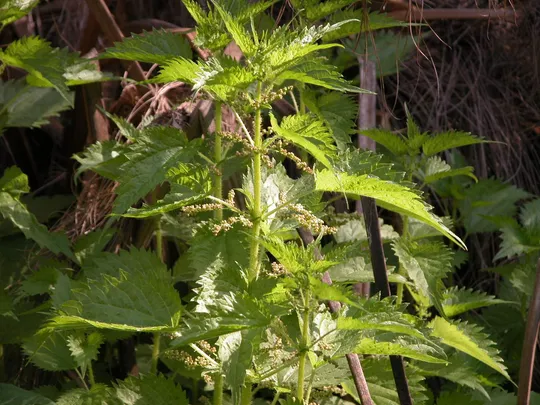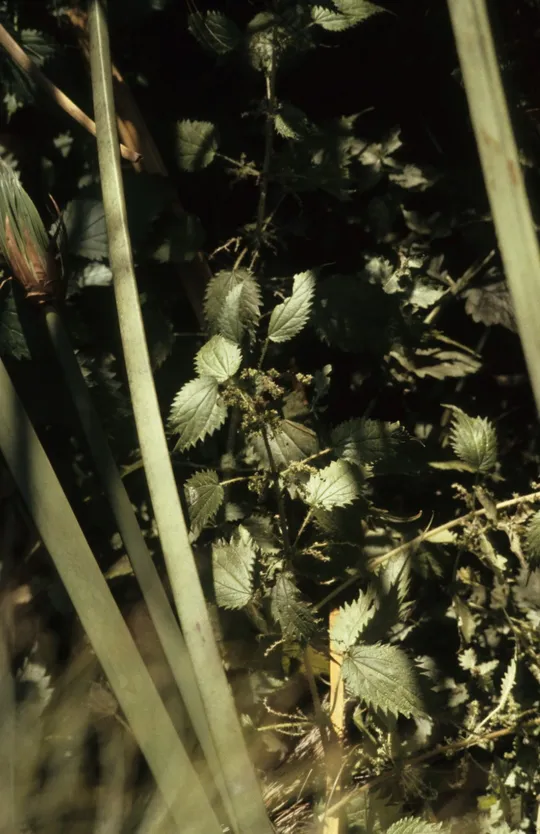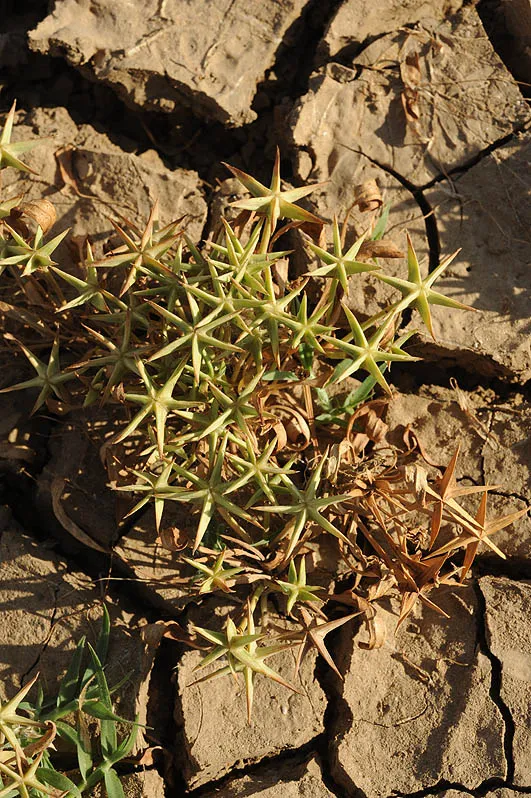Hula Nettle
Urtica kioviensis


Despite its stinging hairs, when cooked in hot water, the leaves of
different Urtica species instantly lose their sting and are excellent
for making soup and other dishes. Urtica seeds are tasty and are used as
a substitute for sesame seeds; they are also believed to have medicinal properties.
Urtica kioviensis
grows in the Hula Valley at three sites: the Hula Reserve, Agamon HaHula and the
Snir Stream. It is known from the Hula since the beginning of the 20th century.
It was also collected in the past north of the Hula, at the Enan Springs but was
not found there again. It was reintroduced to Agamon HaHula and was successfully
acclimatized.
Areas seasonally flooded in winter, canal
banks and at the edges of marshes rich in organic matter.
The genus Urtica includes 80 species
with a cosmopolitan distribution and a rich center, concentrated mainly in the
temperate zone. The genus includes perennial herbaceous species that are characteristic
of northern regions as well as annual species that grow mainly in the
Mediterranean region and/or in disturbed habitats. The genus includes monoecious unisexual species (characteristic of wind-pollinated plants) as well
as dioecious species. The mature anthers droop outwards
and release a cloud of pollen dust that scatters in the wind.
The Hula
population was described in 1947 as a local species new to science, but
it subsequently became clear that it belongs to a species from South Russia (currently
Ukraine) described from the vicinity of the city of Kiev. There is a huge
geographical gap between the Hula populations and the U.
kioviensis distribution center north of the Caucasus,
and it does not grow in any other Middle Eastern countries. The Hula population
may well be the result of long-range dispersal by migrating waterfowl that fly
from southern Russia to Africa via the Jordan Valley and the Dead Sea. This may
have been a one-time migration event, although in the Hula area U.
kioviensis established permanent populations at several
sites since the 1940s, so apparently the appearance of the species in this
region is not episodic. Some researchers include U.kioviensis in the taxonomic variation range of U. dioica which is a Euro-Siberian
and North American species that is extremely common in Europe, North Asia, and
the northern Mediterranean Basin. The closest populations to Israel grow in
Turkey and in Cyprus.
There are another three species of Urtica
in Israel: U. urens, U. pilulifera and U. membranacea. The first two are very common and have a similar
distribution. They are found in landfills, ruins and shady and irrigated sites.
However, their inflorescence differs and is dense in U. urens and sparse in U. pilulifera. The fruits of U.
pilulifera are enlarged spheres, 13 mm in diameter. U.
membranacea
grows on the coastal plain and has long, narrow inflorescences. U. kioviensis and U. membranacea
belong to a different group than U. urens and U. pilulifera.
The species in this group have green stipules and two sessile stipules on each
node, unlike U. pilulifera
and U. urens that have membranous stipules and four
sessile stipules on each node (sometimes the stipules are small and unnoticeable).
U. kioviensis is the only perennial Urtica
species in Israel.
·
Urtica kioviensis grows only in the Hula Valley in Israel, but the number of natural
sites there decreased. At one of the sites (Agamon HaHula) the population is a
reintroduced one.
·
Desiccation of canals and flooded areas may cause local population
extinctions.
·
U. kioviensis is protected in the Hula Reserve and in Agamon HaHula.
·
The species has a broad European distribution and is not
globally endangered.
Urtica kioviensis populations in the Hula Reserve and Agamon HaHula should be monitored.
Urtica kioviensis
is a northern species of the Russian steppes found in most
European countries.
Urtica kioviensis is perennial species of Urtica that
grows in canals and at the edges of marshes on a small number of sites in the
Hula Valley. It is a common northern European species whose sites in Israel are
disjunct from its distribution centers. It is possible that its appearance in
Israel is a result of long-distance random dispersal, but it has become
established at the Hula sites over decades, which associates it with the local flora
and validates its classification as an endangered species in Israel.
Current Occupancy Map
| 1000 squre meter pixel | 5000 squre meter pixel | 10000 squre meter pixel | |
|---|---|---|---|
| number of observations | 0 | 0 | 0 |
| in total pixels | 0 | 0 | 0 |
| Family | Urticaceae |
| Classification | On the endangered species list |
| Ecosystem | Mediterranean |
| Chorotype | Euro-Siberian (Mediterranean) |
| Conservation Site | Hula Nature Reserve |
| Rarity |
1
5
6
|
|---|---|
| Vulnerability |
0
1
4
|
| Attractiveness |
0
0
4
|
| Endemism |
0
0
4
|
| Red number |
1
3.7
10
|
| Peripherality | N |
| IUCN category | DD EW EX LC CR EN VU NT |
| Threat Definition according to the red book | Vulnerable |
 Based on:
Based on:






